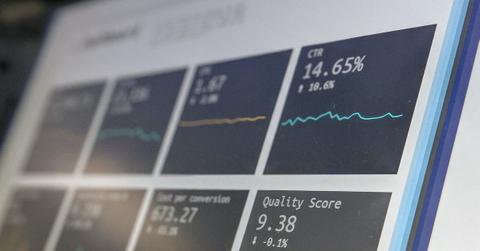Inflation-Protected Securities—Good Investment Amid Rising Prices
Many investors are talking about inflation-protected securities and funds right now as rising prices threaten earnings from fixed-rate bonds.
Aug. 11 2021, Published 10:30 a.m. ET

Many investors are worried about the negative impacts of inflation on their portfolios. Inflation erodes the value of money. It doesn't benefit anyone to invest their money in a bond or other securities only to get it back worthless. Fortunately, there are inflation-protected bond funds or securities to help investors combat this problem.
Inflation means rising product prices. Depending on what you have invested in, rising prices can boost or reduce your returns. For example, stocks can pay off well in inflation.
When prices are rising, companies usually pass on the additional costs to their customers. As a result, they can record higher sales and profits. When investors see that, they rush to buy the stock, which causes its price to appreciate. But inflation can be a bond investor’s worst nightmare. The blow can be particularly heavy on holders of low-yield fixed-rate bonds.

Inflation-protected bonds and how they work
The U.S. federal government issues a type of bond called TIPS (Treasury Inflation-Protected Securities). They have varying maturity periods ranging from 5–30 years.
Unlike regular Treasury bonds, TIPS payouts adjust to keep up with inflation. It means that if prices are rising, the interest on these securities would increase as well to offset the inflation. At maturity, investors receive back inflation-adjusted principal.
Here’s how inflation-protected securities work. You invest $1,000 in a bond that pays 1 percent interest. If nothing happens to prices, you would earn $10 at the end of the year. But if there is a 3 percent inflation, your investment would be adjusted accordingly to $1,030. The original interest rate of 1 percent would still apply but now you would earn $10.30 instead of $10 at the end of the year.
You would also get back $1,030 in principal instead of the $1,000 you invested originally. Most inflation-indexed bonds come from governments, but some companies also issue inflation-protected securities.
Are inflation-protected securities a good investment?
There's a time you might need to have inflation-linked securities in your portfolio. If you have invested in a fixed-rate bond that pays 2 percent interest and then there is a 3 percent inflation, you would be losing money. In that case, you might want to hedge your portfolio with inflation-indexed securities. Inflation-protected funds are ideal for risk-averse investors in a heated economy.
How to buy inflation-protected bond funds
You can access inflation-protected securities in a variety of ways. You could get them directly from the issuing entity, a broker, or invest in mutual funds that specialize in inflation-indexed securities. These funds invest primarily in Treasury’s TIPS bonds, while some combine inflation-linked securities from other sources to offer a more diversified hedging portfolio.
You might need to open an account with a particular provider of inflation-protected funds. However, many of these funds are traded on public markets and can be accessed through brokerage accounts offering ETF investing.
Vanguard's VIPSX and Fidelity's FIPDX are among the popular inflation-protected bond funds. However, you should keep in mind that these funds come with a management fee in the form of an expense ratio. In the case of Vanguard's VIPSX, the minimum investment you can start with is $3,000.
